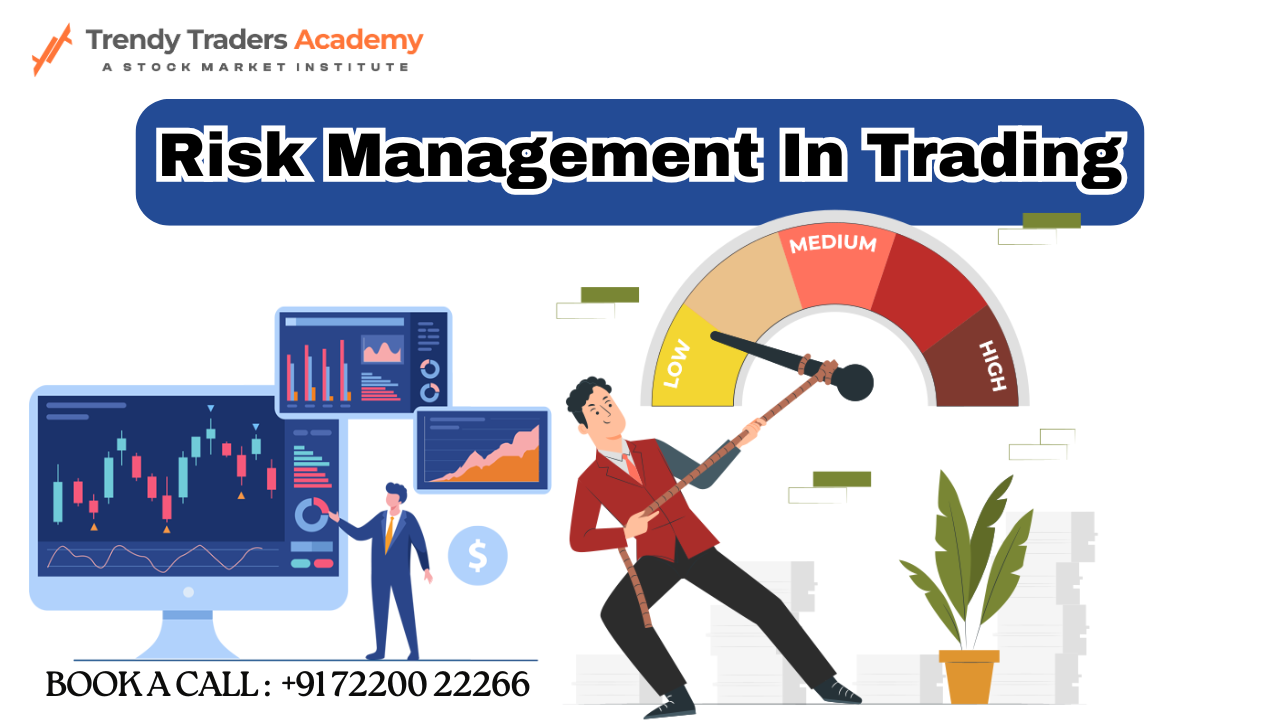
Risk Management in Trading: A Guide to Protecting Your Investments
Introduction
Have you ever wondered why some traders seem to survive market ups and downs while others lose everything? The secret lies in risk management in trading. Whether you’re a beginner or an experienced trader, managing risk is crucial to long-term success. In this guide, we’ll break down what is risk management in trading and how you can apply it effectively.
Learn what is risk management in trading and how to protect your investments with proven strategies. Reduce risks and improve your trading success.
What is Risk Management in Trading?
Risk management in trading refers to the process of identifying, analyzing, and minimizing the risks associated with trading financial assets. It helps traders protect their capital and stay in the game for the long run. Without a solid risk management plan, even the most profitable strategy can lead to massive losses.
Why Is Risk Management Important?
Imagine driving a car without brakes—risky, right? That’s exactly what trading without risk management feels like. A well-planned risk management strategy helps traders:
-
Reduce potential losses
-
Protect profits
-
Maintain emotional stability
-
Trade with confidence
Common Risks in Trading
Trading is full of uncertainties, but the most common risks include:
-
Market Risk: Prices move unpredictably due to market conditions.
-
Liquidity Risk: Low liquidity can lead to slippage.
-
Leverage Risk: High leverage magnifies gains and losses.
-
Emotional Risk: Poor decisions driven by fear and greed.
Key Principles of Risk Management
To manage risk effectively, traders should follow these principles:
-
Never risk more than you can afford to lose.
-
Always use stop-loss orders.
-
Diversify your investments.
-
Stick to a trading plan.
Setting Stop-Loss and Take-Profit Levels
A stop-loss order helps limit losses by closing a trade at a predetermined price, while a take-profit order secures gains at a target level. Setting these levels ensures discipline and prevents emotional trading mistakes.
Position Sizing and Portfolio Diversification
-
Position Sizing: Determines how much of your capital to risk on a single trade.
-
Diversification: Spreading investments across different assets reduces risk exposure.
Emotional Control and Psychological Factors
Emotions can be a trader’s worst enemy. Common pitfalls include:
-
Fear: Leading to early exits or avoiding good trades.
-
Greed: Holding on too long, hoping for bigger profits.
-
Overconfidence: Taking excessive risks after a few wins.
Risk-Reward Ratio: Understanding the Balance
A good risk-reward ratio (e.g., 1:2) ensures that potential profits outweigh potential losses. This means for every $1 at risk, you aim for at least $2 in profit.
Leverage: A Double-Edged Sword
Leverage allows traders to control larger positions with less capital. However, excessive leverage increases risk and can lead to margin calls if the market moves against you.
Hedging Strategies to Minimize Risk
Hedging involves using strategies like:
-
Options trading: Buying put or call options as insurance.
-
Pair trading: Going long on one asset while shorting another.
Using Technology for Risk Management
Technology can enhance risk management by:
-
Automated trading bots to execute pre-set strategies.
-
Risk management tools to calculate optimal position sizing.
-
Real-time alerts for market movements.
Real-Life Examples of Poor and Good Risk Management
-
Bad Example: A trader risks 50% of their account on a single trade and wipes out their capital.
-
Good Example: A disciplined trader risks only 2% per trade, ensuring longevity in the market.
Common Mistakes Traders Make and How to Avoid Them
-
Ignoring stop-loss levels.
-
Overtrading due to greed.
-
Using too much leverage.
-
Not having a clear risk management plan.
Final Tips for Mastering Risk Management
-
Stick to a strategy.
-
Learn from past mistakes.
-
Keep emotions in check.
-
Regularly review and update risk management plans.
Conclusion
Risk management in trading is not just an option—it’s a necessity. By understanding and applying these principles, you can protect your capital, make informed decisions, and increase your chances of long-term trading success.
FAQs
What is risk management in trading?
Risk management in trading is the practice of identifying, assessing, and controlling potential losses to protect trading capital.
How much should I risk per trade?
Most traders risk between 1-2% of their total capital on a single trade to minimize losses.
Can I trade without risk management?
Yes, but it is highly risky and can lead to significant losses.
What is the best risk-reward ratio?
A 1:2 ratio is commonly recommended, meaning you aim for double the profit relative to the risk.
How does leverage affect risk?
Leverage amplifies both profits and losses, making it crucial to use it wisely.
By following these strategies, you can trade smarter, minimize losses, and maximize your long-term success!